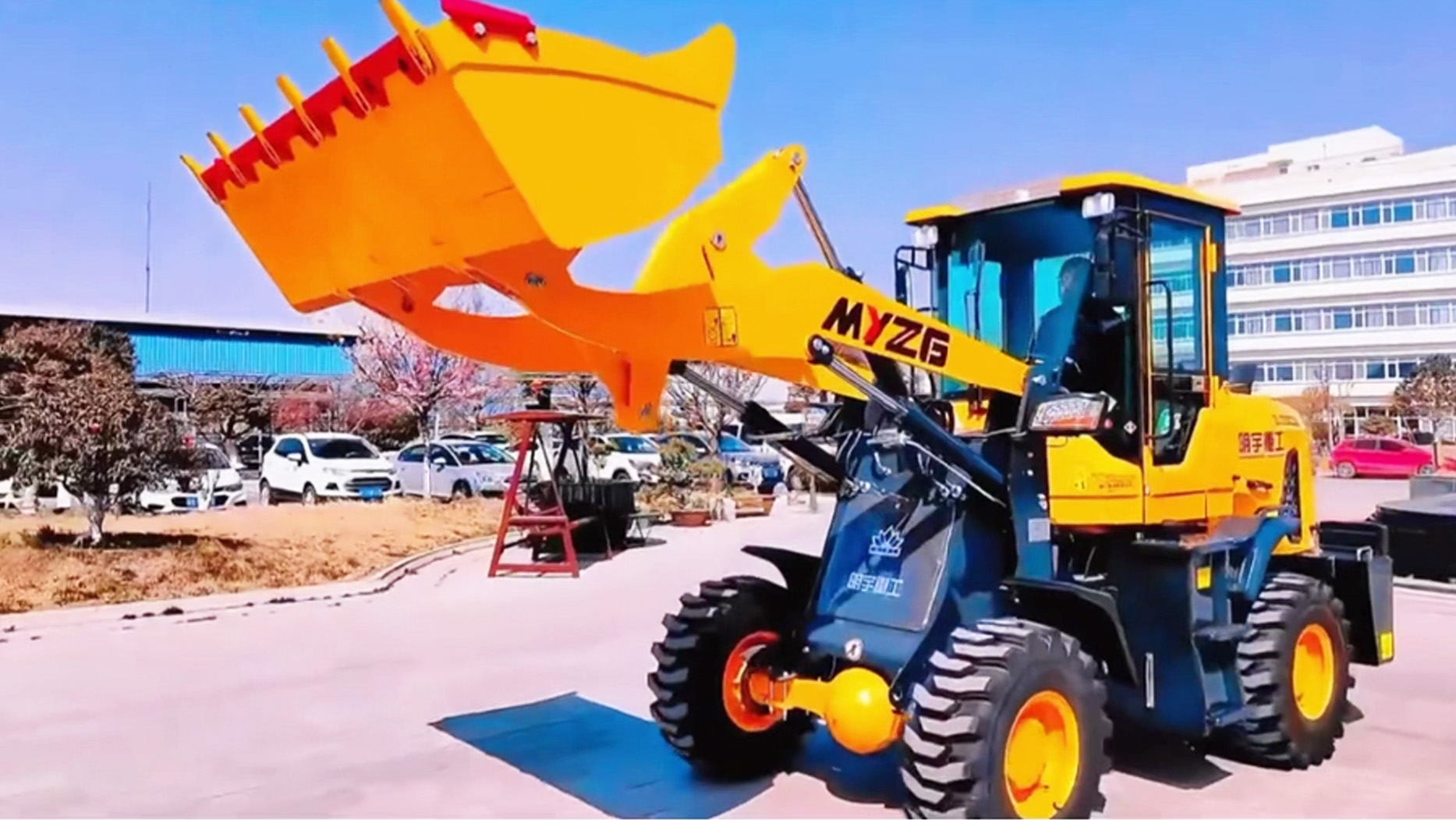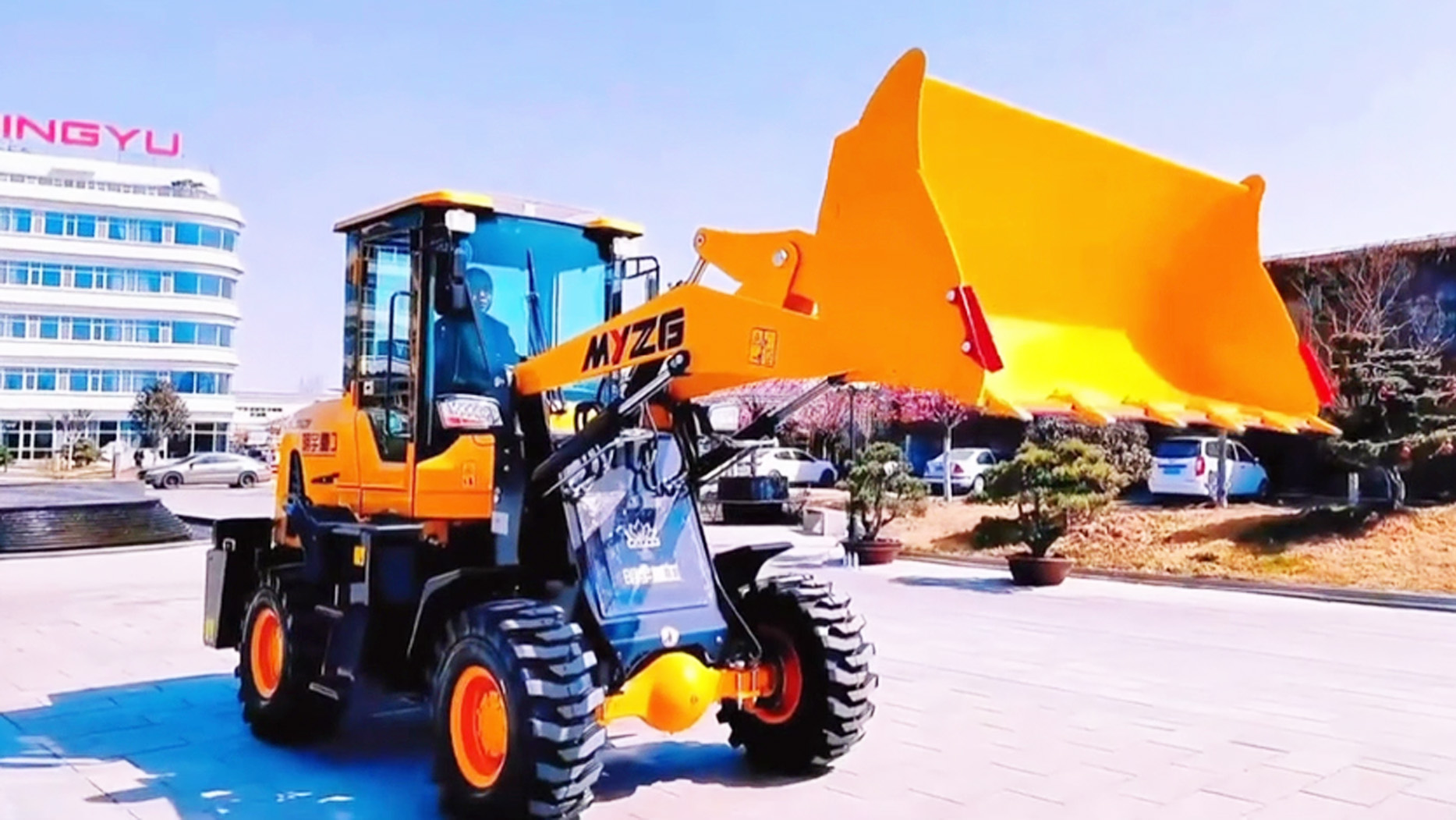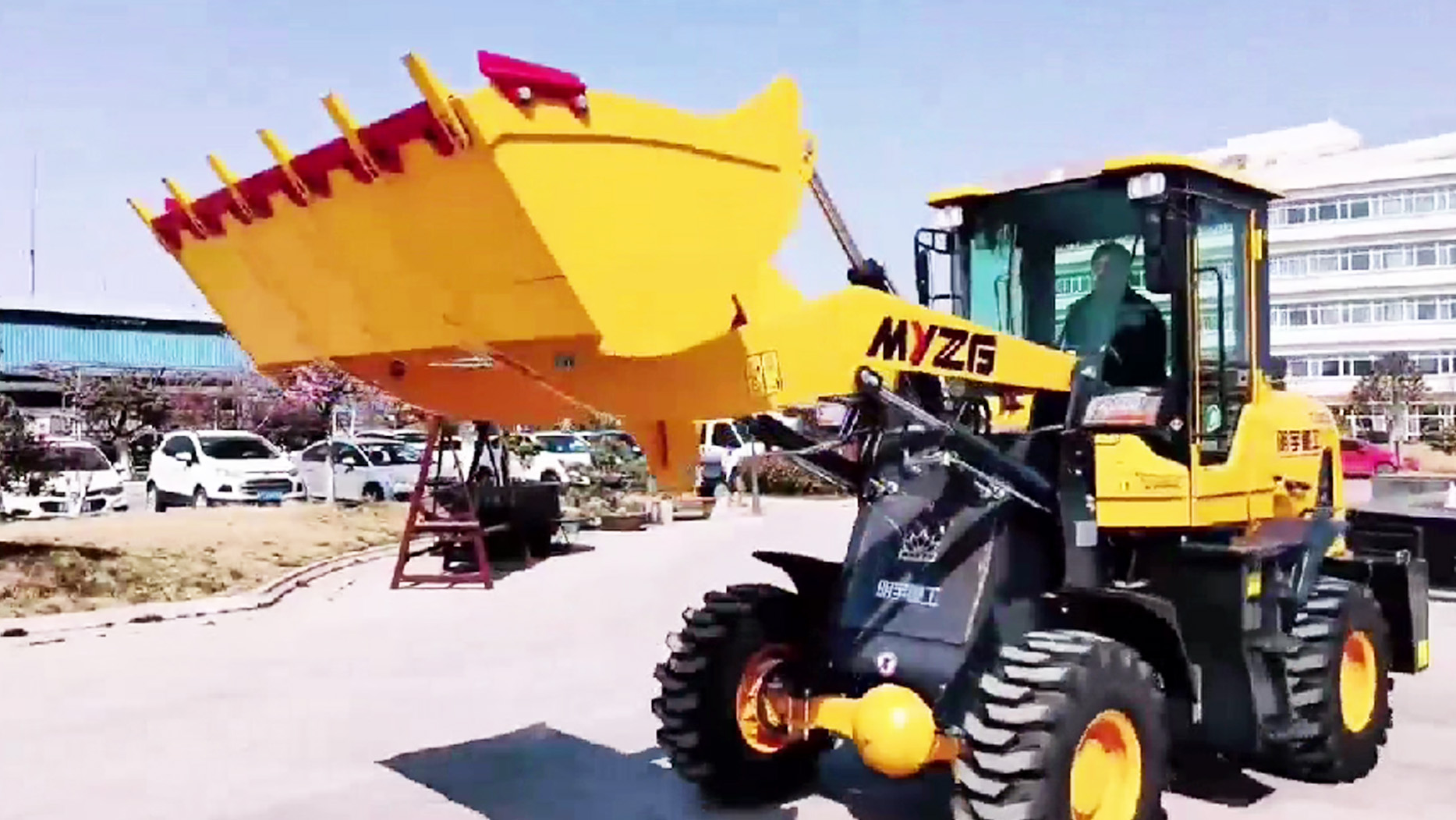I. Introduction
The wheel loader stands as a cornerstone of efficiency and versatility across a multitude of industries, from the raw power needed on construction sites to the delicate material handling in agricultural settings and the relentless demands of mining operations. These robust machines are indispensable for tasks ranging from moving mountains of earth and loading countless trucks to managing agricultural produce and handling bulky waste. However, the sheer variety of models, sizes, and features available can make the selection process daunting. Choosing the wrong wheel loader can lead to decreased productivity, increased operating costs, and ultimately, a negative impact on your bottom line. This article serves as your comprehensive guide, providing a clear, step-by-step framework to navigate the complexities and confidently choose a wheel loader that perfectly aligns with your specific needs and operational demands. If you're in the market, understanding these factors is crucial before searching for a wheel loader for sale.
II. Understanding Your Needs: The Foundation of Your Decision
Before even glancing at specifications or browsing dealer inventories for a wheel loader for sale, the most crucial step is a thorough self-assessment of your operational requirements. Failing to accurately define your needs is akin to shooting in the dark when trying to select the right wheel loader.
A. Identifying the Primary Application(s): The primary task the wheel loader will perform dictates many of its required characteristics. Will it primarily be involved in general construction, such as excavating, loading trucks with soil or gravel, and site preparation? Or will a wheel loader be dedicated to agriculture, handling silage, grain, or manure, often requiring specific attachments and maneuverability in confined spaces? Mining and quarrying demand robust machines, and finding the right wheel loader for sale for this sector means considering extremely heavy and abrasive materials, often working long hours in demanding conditions. Waste management applications might prioritize high lift capacities and specialized buckets for moving and compacting refuse. Even landscaping projects, involving moving soil, mulch, and gravel, have unique demands regarding maneuverability and ground sensitivity. Clearly defining the dominant application will narrow down the field considerably when looking at wheel loader options.
B. Evaluating the Types of Materials to be Handled: The characteristics of the materials you'll be moving are critical when selecting a wheel loader. Are they light and voluminous, like wood chips or snow, or dense and heavy, such as rock or wet soil? The abrasiveness of materials like crushed stone can impact wear and tear on buckets and other components of the wheel loader. Consider if the materials are corrosive, potentially requiring specialized coatings or materials for the loader and attachments. The consistency – whether loose, granular, or bulky – will influence the optimal bucket design and loading techniques for your wheel loader. Understanding these material properties will help determine the necessary power, bucket capacity, and durability of the wheel loader you need, influencing your search for a wheel loader for sale.
C. Assessing the Operating Environment: The physical environment where the wheel loader will operate plays a significant role in the selection process. Terrain is a key factor; will the wheel loader be working on relatively flat surfaces, uneven ground, or significant slopes? This will influence the need for four-wheel drive, traction control, and potentially specialized tires. Space constraints are also vital. Will a wheel loader be operating in tight urban construction sites or wide-open fields? This will impact the importance of maneuverability and turning radius. Ground conditions, whether firm, soft, or frequently muddy, will affect tire selection and the need for features like differential locks on the wheel loader. Finally, consider the climate. Extreme temperatures or dusty conditions can impact engine performance, operator comfort, and the lifespan of certain components of the wheel loader, potentially requiring specific cooling or filtration systems. These environmental factors are important to consider before looking at a wheel loader for sale.
III. Key Factors to Consider When Evaluating Wheel Loaders
Once you have a clear understanding of your needs and operating environment, you can begin to evaluate specific wheel loader characteristics. This is crucial whether you are considering a new or used wheel loader for sale.
A. Size and Capacity: This is often the first and most obvious differentiator when comparing wheel loaders. Rated operating capacity (ROC) refers to the maximum weight a wheel loader can safely lift and carry at full turn, typically expressed as 50% of the static tipping load. Understanding ROC is crucial for matching the wheel loader to the weight of the materials you'll be handling. Tipping load, both static (immobile) and at full turn (the point at which the wheel loader will tip), provides a crucial safety margin. Bucket capacity, usually measured in cubic yards or meters, determines the volume of material the wheel loader can move in a single pass. It's essential to match the bucket size to the density of the material and the size of the trucks or hoppers being loaded by the wheel loader. Overloading can be dangerous and inefficient. Consider the transportability of the wheel loader, especially if it needs to be moved between different job sites frequently. Larger wheel loaders may require specialized trailers and permits, an important factor if you are looking at a wheel loader for sale that needs to be transported.
B. Engine Power and Performance: The engine is the heart of the wheel loader, providing the power for all its functions. Gross and net horsepower indicate the engine's output, with net horsepower accounting for power losses due to accessories. Torque, the rotational force the engine produces, is critical for digging power and the ability of the wheel loader to push into piles of material. Fuel efficiency directly impacts operating costs, so consider models with fuel-saving technologies when looking at a wheel loader for sale. Emissions standards and regulations are increasingly important for environmental compliance and may influence your choice of wheel loader, particularly in certain regions.
C. Drivetrain and Transmission: The drivetrain and transmission system transfer power from the engine to the wheels, influencing the wheel loader's speed, traction, and maneuverability. Types of transmissions, such as powershift (allowing gear changes under load) and hydrostatic (offering smooth, variable speed control), have different characteristics suited for various applications of a wheel loader. Axle configurations (2WD vs. 4WD) significantly impact traction, with 4WD being essential for challenging terrain where the wheel loader will operate. Differential locks help maintain traction on uneven or slippery surfaces by ensuring both wheels on an axle rotate at the same speed on the wheel loader. Consider the required travel speed for your typical tasks and the overall maneuverability needed in your operating environment when selecting a wheel loader for sale.
D. Hydraulics: The hydraulic system powers the wheel loader's boom, bucket, and any attachments. Hydraulic flow and pressure determine the speed and power of these functions. Higher flow rates generally lead to faster cycle times and increased productivity for the wheel loader, especially when using hydraulic attachments. Auxiliary hydraulics are necessary to power specialized attachments like grapples or sweepers on the wheel loader. Cycle times, the time it takes for the wheel loader to lift, dump, and return the bucket, directly impact its efficiency. Consider the control systems – traditional levers or more modern joysticks – and their ergonomics for operator comfort and precision when evaluating a wheel loader for sale.
E. Operator Comfort and Safety: The operator's well-being and safety are paramount for productivity and compliance when using a wheel loader. The cab design should offer excellent visibility in all directions to ensure safe operation of the wheel loader. Low noise levels and effective climate control (heating and air conditioning) contribute to reduced operator fatigue. A comfortable and adjustable seat with proper lumbar support is essential for long working hours in the wheel loader. Ergonomic controls that are intuitive and easy to reach minimize strain and improve efficiency. ROPS (Roll-Over Protective Structure) and FOPS (Falling Object Protective Structure) certification are critical safety features to protect the operator in case of accidents involving the wheel loader. Features like mirrors, cameras, and warning systems further enhance safety on the job site where the wheel loader is operating. When considering a wheel loader for sale, always prioritize safety features.
IV. Exploring Different Types and Features of Wheel Loaders
Beyond the core specifications, understanding different types and available features can further refine your selection of a wheel loader.
A. Articulated vs. Rigid Frame Loaders: The primary distinction in wheel loader design lies in their steering mechanism. Articulated loaders have a hinged joint in the middle, allowing for excellent maneuverability and a tighter turning radius, making them ideal for confined spaces. Rigid frame loaders steer using only their wheels, offering greater stability and often higher lifting capacities for their size, making them well-suited for tasks requiring maximum pushing power and stability on more even terrain. The type of steering will influence your search for a wheel loader for sale.
B. Attachment Options and Versatility: One of the key advantages of wheel loaders is their versatility, largely due to the wide range of available attachments. Buckets come in various designs, including general purpose, light material, rock, and side-dump, each optimized for specific tasks for the wheel loader. Forks, such as pallet forks and lumber forks, allow the wheel loader to handle palletized goods and long materials. Grapples, including log grapples and waste grapples, are essential for handling irregular materials with a wheel loader. Blades, like dozer blades and snow pushers, expand the wheel loader's capabilities for grading and snow removal. Quick couplers are a crucial feature, allowing for rapid and easy attachment changes, maximizing the wheel loader's adaptability on the job site. When looking at a wheel loader for sale, consider the availability and cost of necessary attachments.
C. Technological Advancements: Modern wheel loaders are increasingly incorporating advanced technologies to improve efficiency, safety, and management. Telematics and fleet management systems provide valuable data on machine performance, location, and utilization of the wheel loader, aiding in maintenance scheduling and operational optimization. GPS and grade control technologies can assist in earthmoving and grading tasks performed by the wheel loader, improving accuracy and reducing rework. Load weighing systems provide real-time information on the weight of the material in the bucket of the wheel loader, preventing overloading and improving efficiency in loading trucks or hoppers. Smart control systems and automation are emerging, offering features like automatic bucket leveling and programmable work cycles for the wheel loader, further enhancing productivity and reducing operator fatigue. When considering a wheel loader for sale, inquire about these technological features.
V. Making the Right Choice: A Step-by-Step Process
With a solid understanding of your needs and the various factors and features of wheel loaders, you can follow a structured process to make the best decision when purchasing a wheel loader for sale.
A. Define Your Needs Clearly (Reiterate Section II). Go back to your initial assessment. Have your primary applications, material types, and operating environment been thoroughly documented for the wheel loader you need? This will serve as your benchmark throughout the selection process, especially when evaluating a wheel loader for sale.
B. Research Available Models and Manufacturers: Once your needs are clear, start researching different wheel loader models from reputable manufacturers. Consider their track record for reliability and the reputation of their machines in your industry. Pay close attention to the dealer support network, as easy access to parts and service is crucial for minimizing downtime of your wheel loader. Compare the specifications and features of different machines that seem to align with your requirements when looking at a wheel loader for sale.
C. Evaluate Total Cost of Ownership (TCO): Don't just focus on the initial purchase price of the wheel loader. Consider the long-term total cost of ownership, which includes fuel consumption, maintenance costs (both routine service and potential repairs for the wheel loader), insurance, and even the estimated resale value of the machine. A cheaper wheel loader for sale upfront might end up costing more in the long run due to higher operating or maintenance expenses.
D. Consider Dealer Support and Service: A strong relationship with your dealer is essential for the longevity and productivity of your wheel loader. Evaluate the parts availability and the speed of their delivery. Assess the technician expertise and the extent of their service network for the wheel loader brand you are considering. Inquire about warranty options and the level of training and support they provide for operators and maintenance personnel for the wheel loader.
E. Arrange Demonstrations and Test Drives: The final and arguably most important step is to see and operate the potential wheel loaders in person. Arrange demonstrations on your job site or in conditions similar to your work environment. Test drive the machines yourself or have your experienced operators do so. This will allow you to assess operator comfort, the ease of use of the controls of the wheel loader, and the actual performance and responsiveness of the wheel loader in real-world conditions before making a decision on a wheel loader for sale.
VI. Conclusion
Choosing the right wheel loader is a significant investment that can profoundly impact your operational efficiency and profitability. By taking the time to thoroughly understand your specific needs, carefully evaluating key factors like size, power, and features, and considering the long-term implications of your decision when looking at a wheel loader for sale, you can navigate the complexities of the market with confidence. Remember that aligning the machine precisely with your primary applications, material handling requirements, and operating environment is paramount. Ultimately, an informed decision will lead to a wheel loader that not only meets your immediate needs but also provides reliable performance and long-term value for your business.
Post time:Apr.08.2025



